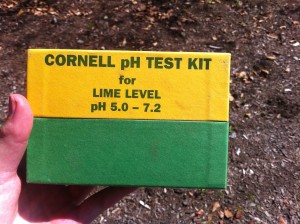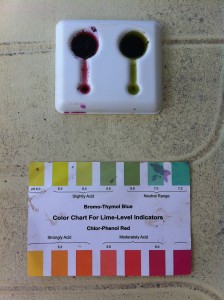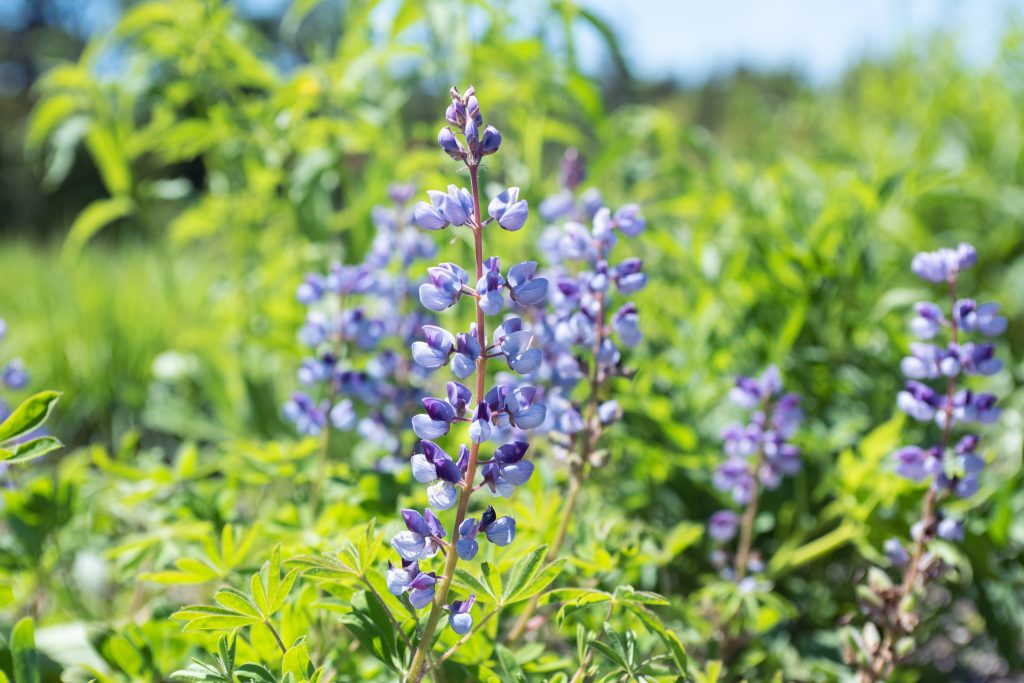As many of you know, at Coastal Maine Botanical Gardens we have a lot of planting to do each spring. Then the summer weeds spring up and the horticulture team jumps into action keeping them at bay. Much of the time its a simple matter of obtaining the plants and then exerting a little energy to get them into the ground. On occasion, though, we run into some problems. Plants are all unique and each requires something different from the soil its planted in. Some plants enjoy highly acidic soils, while others prefer more alkaline soils.
Not all of the beds that we have at the Gardens are the same pH; many have been altered to allow for a variety of plants. I was sent out to measure the pH of a bed that was almost barren. I was so excited when Justin Nichols, a staff horticulturalist, sent me off on a mission to do this. Although it was very simple, I enjoyed the opportunity to do something slightly more scientific than planting. Using a Cornell pH testing kit, I found that the pH of the bed was around 6.7. Testing your own soil pH is very simple, you can obtain a soil pH test at your local hardware store or extension service. Once you have a kit, take a small sample of soil and put it into the container provided, then add the indicator. Our standard kit came with two indicators: Chlorphenol red (soil pH range 5.0 to 6.2) and Bromthymol blue (soil pH range 6.0 to 7.2). When you have your sample in their container, add several drops of each indicator to each sample. From my pictures you can see that I did both and found the Chlorphenol red indicated far above any of the given pH values. The Bromthymol blue tested sample was really the only one we needed, showing a result fairly close to 6.7.
Rhododendrons thrive in slightly acidic soils with a pH between 4.5 and 5.5. To learn more about rhododendrons click here. As stated before, the pH of the bed I tested was about 6.7. That is just too alkaline to plant the rhododendrons in, so we have to change the soil acidity. In order to do that we will use a product that you can get at almost any garden store in the country, Espoma Soil Acidifier. Using the directions we will mix in the product until the bed reads the pH of 5. This ensures that the rhododendrons will live happily ever after in that bed. I greatly enjoyed taking a break from the crazy world of weeding and deadheading to pull my inner scientist out and do some testing.
-Kristin Neill, Horticulture Intern (July 22, 2013)




